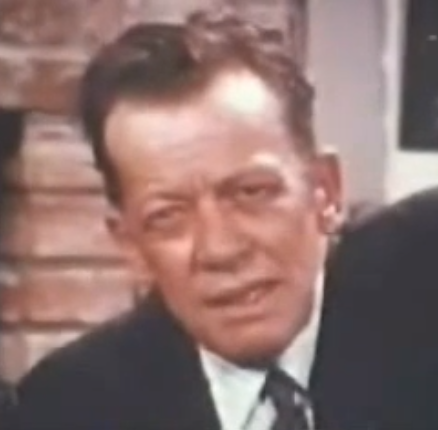
David Maril’s array of no longer used ashtrays includes a ceramic (blue and white) model, several made of glass, one of copper and one metal. His black & white Maine Coon cat ‘Sampson’ can be seen using the ceramic tray as a feeding dish in image below. (VoB Photo/David Maril)
CIGARETTES GO UP IN SMOKE
ON JANUARY 11, 1964, A DAY
IN U.S. SMOKING INFAMY
Popular lifestyle addiction
exposed as ‘cancer sticks’
CIGARETTES STILL SURVIVE TODAY
BUT IN A GREATLY REDUCED ROLE
By David Maril
January 11th this year is an anniversary date the powerful tobacco companies are not celebrating. On that day in 1964, Surgeon General Luther Terry issued the first official government report linking illness and death with smoking.
Cigarettes, which were being marketed as cool and a sign of maturity and status, became exposed for what they really are: “cancer sticks.”
Systematically, the government banned smoking commercials from the airwaves, placed age restrictions on who could buy tobacco products, and dramatically decorated each pack and carton with ominous health-warning signage.
With all of the taxes, tariffs and restrictions on where a person can light up, it’s astounding anyone still smokes. Before the initial Surgeon General’s Report was issued, 42 percent of adults in the U.S. smoked. Today, according to the Associated Press, the percentage of adult smokers has dropped by more than half, to 18 percent.
With all the evidence publicizing the negative impact of secondary smoke to nonsmokers, and with smoking on the verge of being banned just about everywhere except in a person’s own home, you might wonder why it hasn’t been outlawed altogether in this country.
There’s one simple answer: Money talks. As long as cigarettes are sold, there is plenty of state and federal tax revenue coming in.
Cynic that I am when it comes to politicians, I think it is pretty obvious that the only reason states, like Maryland, are even considering legalizing marijuana for purchase beyond medical considerations, is the potential tax revenue.
A major reason for the survival of tobacco companies is the fact they have diversified and are part of huge corporations that the public owns through stocks and mutual funds. Also, while smoking has become more limited in the United States, these companies generate tons of profit selling tobacco products in countries all over the world.

‘Sampson Maril’ is a nine-year-old Maine Coon cat who enjoys eating his meals at his Baltimore home out of a ceramic ashtray that was made by a potter on Cape Cod in the 1950s. (VoB Photo/David Maril)
It’s probably hard for anyone under 30 to realize the impact of that 1964 report, drastically changing the way we live.
It must be a culture shock for many when they watch a classic movie or a vintage TV show from those earlier decades and see how often all of the characters light up.
For those of us growing up in the 1930s, 40s, 50s, 60s or 70s, pulling a cigarette out of a pack and lighting up at work was as acceptable as taking a sip of water out of a plastic bottle is today.
The smoke exhaled out of someone’s lungs and mouth, or just drifting into the air from an ashtray, was considered no worse than steam rising from a hot cup of coffee. Smoking was even allowed and encouraged on trains and airplanes.
By a combination of timing and luck, I was not a smoker and never had to deal with its addictive nature and the fact it’s a habit that’s so hard to give up. Even though my parents were casual smokers, the campaign against cigarettes was organizing when I was a kid and the focus was centering on trying to prevent the younger generation from starting.
Still, I grew up surrounded by smokers and was forced to accept it as a fact of life. Many teachers I had at Park School had no qualms about smoking a cigarette in the classroom.
When you watched television in the 1960s you were saturated by sophisticated commercials that often had higher production values than the program you were viewing. The actors and actresses in cigarette commercials exuded youth, success, sex, glamor, toughness, class and charisma.
There was great background music and captivating, exotic scenery. Smoking was marketed as the answer to everything. You could look sharp and convey coolness while each puff helped you relieve stress and discover a great new world.
Even credible TV hosts, like the great Rod Serling, would often end a telecast making a pitch for whatever cigarette they were smoking. It was also not uncommon to see cigarettes and their smoke on network news broadcasts at the anchor desks.
Radio was just as influential. Cigarettes were as much a part of sports broadcasts as beer, cars and hotdogs. Highly revered players, like Chicago White Sox great Nellie Fox, were famous for having giant chaws of chewing tobacco pushing out one side of their cheeks.

Chicago White Sox Hall of Fame second baseman Nellie Fox, with a chaw of tobacco in his cheek. (Photo c.late 1950s)
Most tobacco products had snappy radio jingles and tunes. There were vocalists singing stuff like “Camels’ real taste satisfies longer.” Or “Winston tastes good like a cigarette should.”
If you were not a smoker and in the newspaper business, cigarettes were a pain in the neck you could do nothing about. I remember in the 1980s it was torture covering pro football. While spending eight hours on Sundays in the New England Patriots’ press box at Foxboro, you’d be trying to recall what air without cigarette smoke felt like.
Probably more than half of the 300 or so media people were puffing away in the closed quarters. When you left the stadium, at the end of the day, your clothes smelled like an ashtray that hadn’t been emptied.
Covering baseball wasn’t as bad. Just as many reporters smoked but at least the press boxes were wide open, outdoors, and had gusts of fresh air blowing through.
The newsrooms, however, back at your home base, were just as bad as the football press boxes. Most reporters and editors smoked cigarettes and cigars. If they became worried about their health, they’d switch to smoking pipes. As the use of office climate control systems spread, preventing people from opening windows, secondhand smoke became a way of life.
The first signs in newsrooms — probably in the late 1980s —that cigarettes were finally going to be recognized as health hazards, were the arrival of special ashtrays that absorbed smoke, and tiny battery-operated fans that would blow some of the polluted air away from you.
Looking back at all of this, I can sadly say many of those heavy smokers I worked with ended up needing heart bypass surgery or became ill with lung cancer and other serious medical afflictions related to cigarettes.
If you watch a classic episode of “The Twilight Zone” and see Serling inhaling intensely on a cigarette as he delivers his epilogue, it’s hard not to think about the fact he died at the relatively young age of 50 from complications following heart surgery.

‘Twilight Zone’ creator/host Rod Ser- ling often held — and puffed on — a cigarette while delivering his epilogue at the end of each show. Serling died at age 50 following heart surgery.
Today, many of us nonsmokers grumble when we even notice a crushed, discarded cigarette on a sidewalk or see someone toss a cigarette out the window of a car. Even if it’s 25 degrees, we make visiting relatives and guests go outside, like dogs who need to “do their business,” when they ask if it’s OK to smoke.
Up until a few years ago, most homes had ashtrays in every room. Today, most of those ornate ceramic, glass and metal ashtrays have become food dishes for cats and small dogs.
It’s amazing how far we have come in discouraging the use of cigarettes, and the success in exposing tobacco products for what they really are. The impact of that historic Surgeon General’s Report deserves special recognition on its 50th anniversary.
davidmaril@hermanmaril.com
“Inside Pitch” is a weekly opinion column
written for Voice of Baltimore by David Maril.

William Talman, a chain-smoker who died of lung cancer in 1968 at age 53, gives new meaning to the term ‘coffin nails’: Talman, who is best known for playing fic- tional Los Angeles District Attorney Hamilton Burger in the long-running TV series ‘Perry Mason,’ is shown here in the first American Cancer Society anti-smoking ad filmed by an actor, six weeks before his death. In the one-minute-plus film, he in- troduces his wife and children, two of them toddlers, and exhorts viewers to ‘take some advice about smoking and losing from someone who’s been doing both for years: If you don’t smoke, don’t start. If you do smoke, quit. Don’t be a loser.’
EDITOR’S NOTE: At City Col-
lege High School in Baltimore
in the mid-1950s students were allowed to carry cigarettes and smoke on campus no matter what their age — although not within the school building. It was not unusual, however, when a teacher entered the boys’ lavatory between classes, to hear every toilet flush simultaneously, while cigarette butts got tossed out the window by the dozens, and the bathroom filled with so much smoke the teacher couldn’t see more than 12 inches in front of his face. In the courtyard two floors below the restroom, which was off-limits to students, cigarette butts were said to have accumulated inches deep, covering the concrete walkways and never-used benches.
CHECK OUT LAST WEEK’S “INSIDE PITCH” COLUMN:
click here …and read
previous Dave Maril columns
by clicking here.






January 19th, 2014 - 9:28 PM
[…] OUT LAST WEEK’S “INSIDE PITCH” COLUMN: click here …and read previous Dave Maril columns by clicking here. Filed under: Top Stories […]